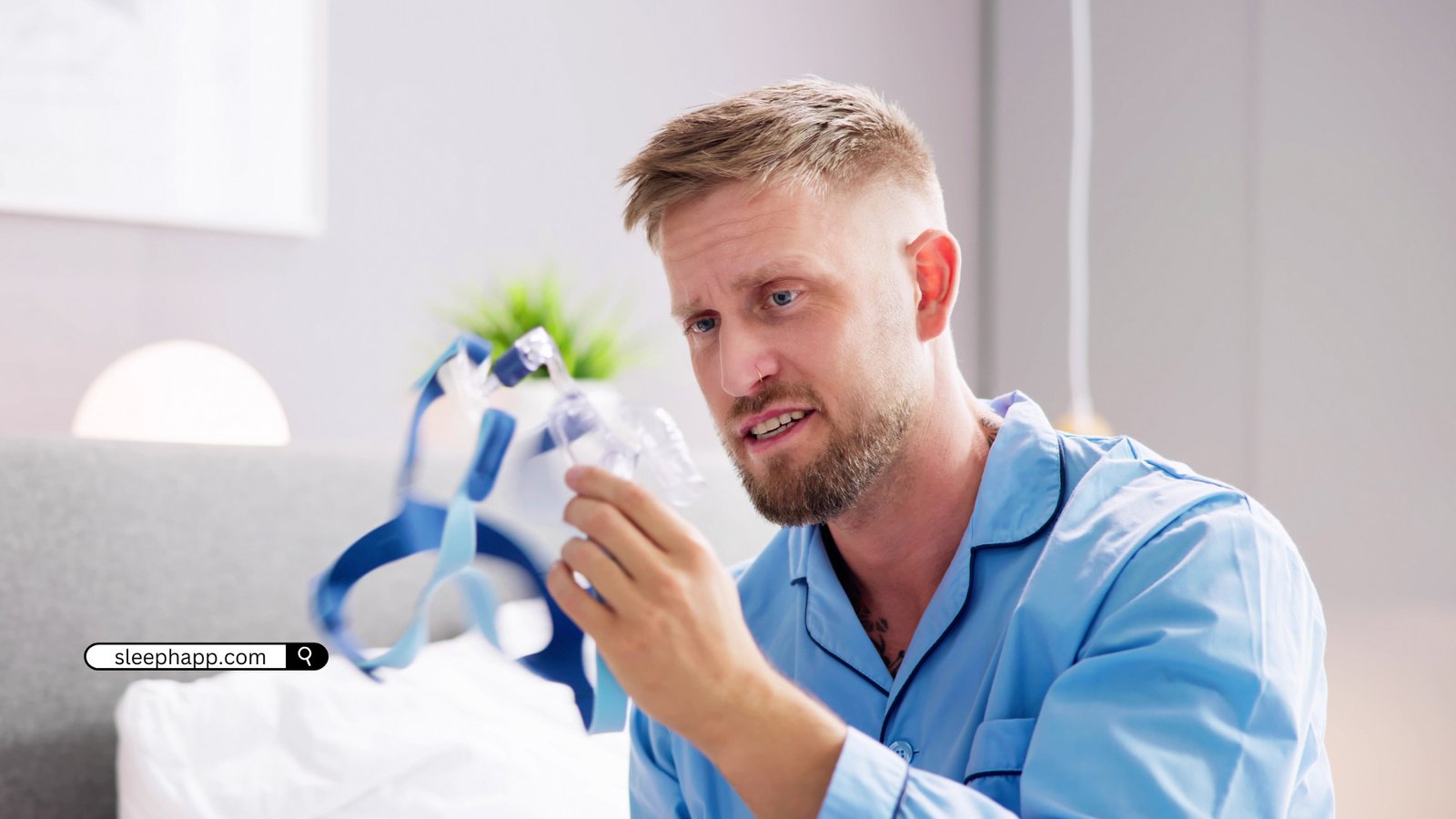Prevent Water Buildup In Your CPAP Hose And Mask (CPAP Rainout)
Home » Prevent Water Buildup In Your CPAP Hose And Mask (CPAP Rainout)

Table of Contents
If you use a humidifier with your CPAP machine, you may have noticed water building up in the hose or mask by morning. This is called a “CPAP rainout,” it can cause an annoying gurgling sound in the hose, or the water may drip onto your face, waking you up at night. This guide explains what causes CPAP rainout, addresses a common health concern related to it, and provides several easy tips to help you prevent it from happening again.
What Causes CPAP Rainout?
Some people experience discomfort when using CPAP therapy due to the pressurized air, leading to issues like a dry mouth and nose, sinus congestion, and throat irritation. To help with this, many CPAP machines have a built-in water chamber that you can fill with distilled water. The machine warms the water to add humidity to the air, making it easier to sleep comfortably. However, as the warm, humid air travels through the tubing to the mask, it can cool down. When this happens, the moisture in the air turns back into liquid, causing it to build up in the tubing and sometimes drip onto your face.
Is CPAP Rainout A Cause For Concern?
When moisture from your CPAP machine collects in the tubing or mask, rainouts can be frustrating, especially if they disrupt your sleep or make you uncomfortable. However, they aren’t dangerous. The main worry is that dealing with rainouts might discourage you from using your CPAP machine, which is essential for managing sleep apnea and avoiding related health problems. Although removing your mask, turning off the humidifier, or stopping using the machine might be tempting, it’s important to stick to your therapy. Luckily, there are effective strategies to prevent CPAP rainout, so you can enjoy humidified therapy’s benefits without interruptions.
Warm Up Your CPAP Tubing For Better Comfort
To prevent rainout during your therapy, keeping the humidified air at a consistent temperature as it moves from your machine to your mask is important. Here are some simple tips to help improve your setup:
- Use A Heated CPAP Hose
- Warm Your CPAP Tubing For Comfort
- Configure The Humidity Levels On Your Machine
- Set A Comfortable Temperature In Your Room
- Set Your Machine At A Height Below Your Head
1. Use A Heated CPAP Hose
Heated CPAP tubing is designed to keep the air you breathe during therapy warm and humidified. It does this by using extra insulation and features like built-in pads or coil elements that protect the air from the cooler temperatures of the room. This helps reduce condensation, a common issue with CPAP therapy. Many heated tubing models have sensors that automatically detect the room’s temperature and adjust the heating accordingly. Some models even allow you to manually adjust the settings to find the perfect temperature for your comfort.
2. Warm Your CPAP Tubing For Comfort
If you’re experiencing a CPAP rainout even with a heated hose, a CPAP hose cover might be a good solution. These covers provide extra insulation, helping to keep the air temperature consistent and prevent condensation. Made from soft and comfortable materials, they can also reduce airflow noise. Additionally, you can tuck your tubing under the sheets for even more insulation. This simple adjustment can improve your CPAP experience by minimizing rainouts and enhancing comfort.
3. Configure The Humidity Levels On Your Machine
You may need to adjust the humidity settings based on the season or location to get the best performance from your machine. The air is usually more humid in spring and summer or in warmer areas. Therefore, you might need to lower the humidity level. On the other hand, in fall and winter, or cooler regions, the air tends to be drier, so you may need to increase the humidity level. Finding the right setting can take some time and experimentation, so it’s a good idea to consult your doctor for guidance.
4. Set A Comfortable Temperature In Your Room
If the air from your therapy device and the room are very cold, you’ll notice more condensation in the tubing. To help reduce this “rainout,” try raising the temperature in your room a few degrees, as long as it’s comfortable for you.
5. Set Your Machine At A Height Below Your Head
Water buildup in your tubing can create issues, especially if your machine is placed on a bedside table above your head. The biggest problem is that this water can flow down the hose and end up in your mask and face, causing discomfort. To avoid this, consider moving your machine to a lower shelf or even the floor. This way, gravity will help pull any water back down the tube into the humidifier, preventing it from reaching your mask.
Tips To Reduce Rainout In CPAP Therapy
Suppose you’re having trouble accumulating water in your CPAP hose and mask. While you might not be able to eliminate this issue, there are several strategies you can use to significantly reduce it. Combining different tips can help minimize condensation, making your therapy more comfortable. If you have any questions about our heated tubing, covers, or machines, please visit our website, Sleephapp Medical, or contact us at sales@sleephapp.com; We will be glad to help you.
SEE OUR SLEEPHAPP MEDICAL PRODUCTS!
